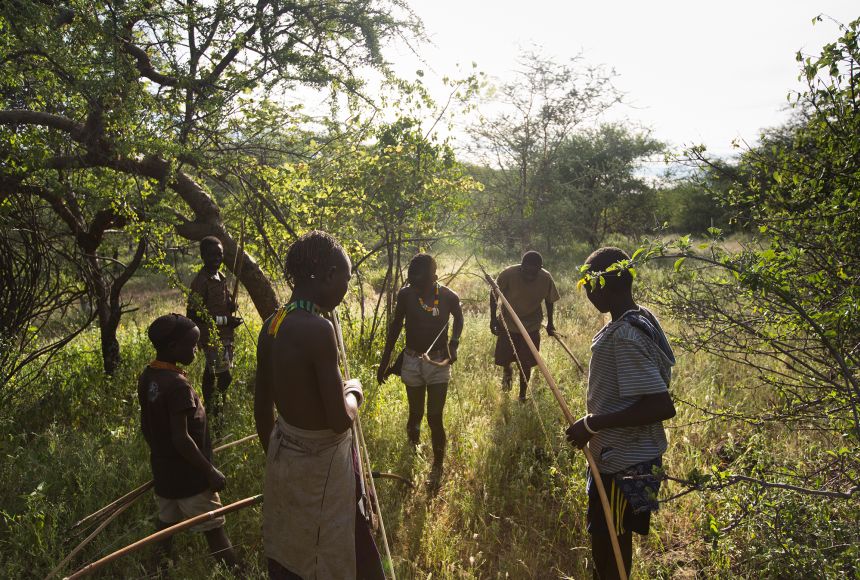ENCYCLOPEDIC ENTRY
ENCYCLOPEDIC ENTRY
Hunter-Gatherer Culture
Hunter-Gatherer Culture
Hunter-gatherer culture was the way of life for early humans until around 11,000 to 12,000 years ago. The lifestyle of hunter-gatherers was based on hunting animals and foraging for food.
Grades
6 - 8
Subjects
Anthropology, Social Studies, World History
Image
Hunting for Game
The Hadza people of Tanzania rely on hunting wild game for meat, a task that requires great skill in tracking, teamwork, and accuracy with a bow and arrow.
Photograph by Matthieu Paley

Media Credits
The audio, illustrations, photos, and videos are credited beneath the media asset, except for promotional images, which generally link to another page that contains the media credit. The Rights Holder for media is the person or group credited.
Director
Author
Production Managers
Program Specialists
other
Last Updated
November 20, 2024
For information on user permissions, please read our Terms of Service. If you have questions about how to cite anything on our website in your project or classroom presentation, please contact your teacher. They will best know the preferred format. When you reach out to them, you will need the page title, URL, and the date you accessed the resource.
Media
If a media asset is downloadable, a download button appears in the corner of the media viewer. If no button appears, you cannot download or save the media.
Text
Text on this page is printable and can be used according to our Terms of Service.
Interactives
Any interactives on this page can only be played while you are visiting our website. You cannot download interactives.